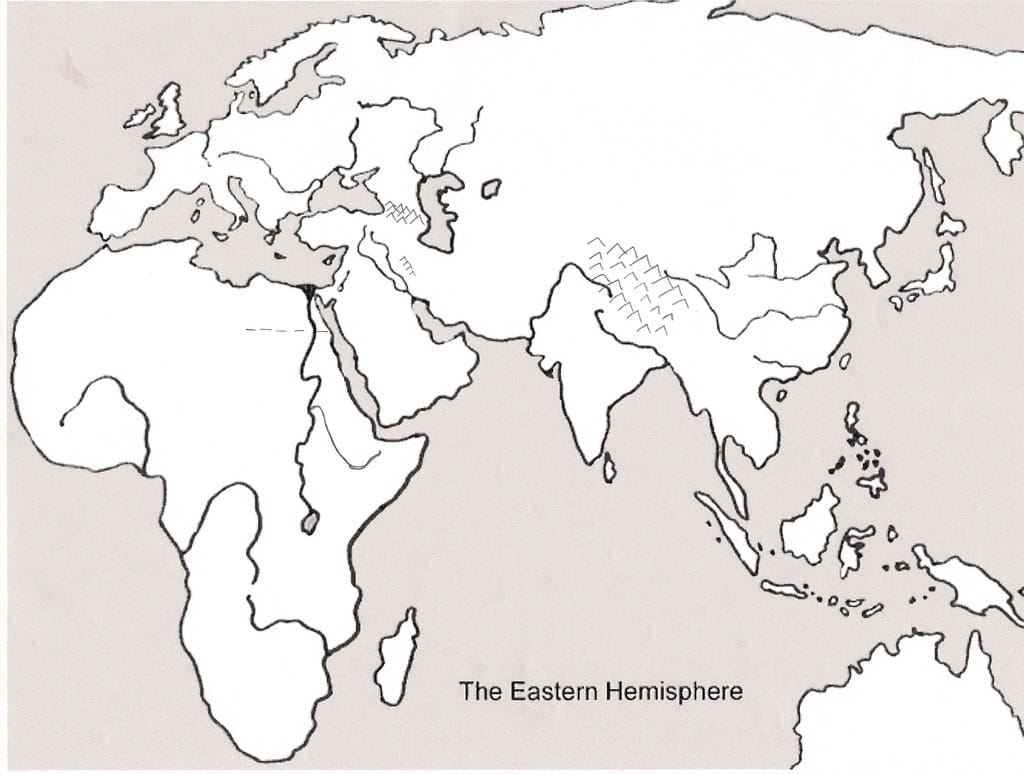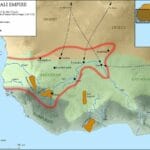Bridging Continents: How Empires Shaped Afro-Eurasian Trade
Think of empires as the master architects of the ancient world, not just conquering lands, but connecting them. Their expansion across Afro-Eurasia—a region stretching from the shores of North Africa to the bustling cities of China—wove a complex tapestry of trade routes, transforming civilizations and leaving a lasting legacy on global trade.
West African Empires: Commanding the Trans-Saharan Trade Winds
In the heart of West Africa, empires like Ghana, Mali, and Songhai rose to prominence, not through military might alone, but by strategically controlling one of history’s most lucrative trade networks: the trans-Saharan trade. Their power lay in their geography, positioned at the crossroads of North Africa and sub-Saharan Africa, a region abundant with highly sought-after resources.
Gold, mined in abundance in West Africa, flowed north across the Sahara, while salt, a precious commodity in the south, made its way from the Saharan salt mines. This exchange of essential goods fueled the rise of powerful empires, with Mali, under the rule of Mansa Musa I, becoming synonymous with wealth and opulence. His legendary pilgrimage to Mecca in 1324, a caravan laden with gold, announced Mali’s prosperity to the world, drawing merchants and scholars, further cementing its place in the Afro-Eurasian trade network.
These empires understood that prosperity hinged on more than just resources; it required infrastructure and security. They invested in well-maintained trade routes, ensuring the safe passage of caravans across the unforgiving Sahara Desert. This stability, coupled with a robust legal system that protected merchants and ensured fair trade, solidified their positions as economic powerhouses.
The Mongol Empire: Unifying Eurasia Under a Banner of Trade
Across the vast expanse of Eurasia, another empire rose to prominence, forever altering the course of trade and cultural exchange: the Mongol Empire. While their conquests were swift and often brutal, under the leadership of figures like Genghis Khan, they established a period of relative peace known as the Pax Mongolica. This stability had a profound impact on trade, revitalizing the famed Silk Road and ushering in a golden age of connectivity.
The Mongols’ genius lay not just in conquest but in administration. Recognizing the economic and strategic importance of trade, they implemented policies that protected merchants, encouraged commerce, and standardized practices. They unified previously fragmented regions under a single political entity, dismantling barriers and enabling the flow of goods and ideas from the Pacific coast to the doorsteps of Europe.
Their sophisticated Yam system, a relay courier network spanning their vast empire, was a marvel of its time. This intricate network facilitated rapid communication, allowing for the efficient movement of envoys, messages, and even goods across unimaginable distances. The Mongol Empire, through its policies and innovations, transformed Eurasia into a bustling hub of interconnected trade, its impact resonating for centuries to come.
A World Transformed: The Enduring Legacy of Trade and Empire
The expansion of empires across Afro-Eurasia did more than just facilitate trade; it sparked a vibrant exchange of cultures, ideas, and technologies. As merchants traversed these newly established trade routes, they carried with them not just goods, but stories, beliefs, and innovations that would reshape societies.
The spread of Islam across West Africa and Southeast Asia is a testament to this cultural diffusion. Carried by traders and scholars, the religion took root, influencing everything from legal systems to architectural styles. Similarly, Buddhism, originating in India, found new followers along the bustling trade routes, its teachings reaching China and Southeast Asia, leaving an indelible mark on art, philosophy, and spiritual practices.
Empires, through their pursuit of expansion and control, inadvertently became the architects of a more interconnected world. They established the infrastructure, the policies, and the environments that allowed trade to flourish, enabling the cross-pollination of cultures and the dissemination of knowledge.
It is important to acknowledge that this era of empire-building was not without its complexities and challenges. Competition between empires often led to conflict, disrupting trade and causing widespread instability. The increased movement of people and goods, while largely beneficial, also facilitated the spread of devastating diseases, such as the Black Death, highlighting the interconnected nature of a globalizing world.
Yet, the legacy of these empires and the trade networks they fostered endures. They laid the foundation for the interconnected world we live in today, underscoring the enduring power of trade to shape not just economies, but cultures, belief systems, and the course of human history.












